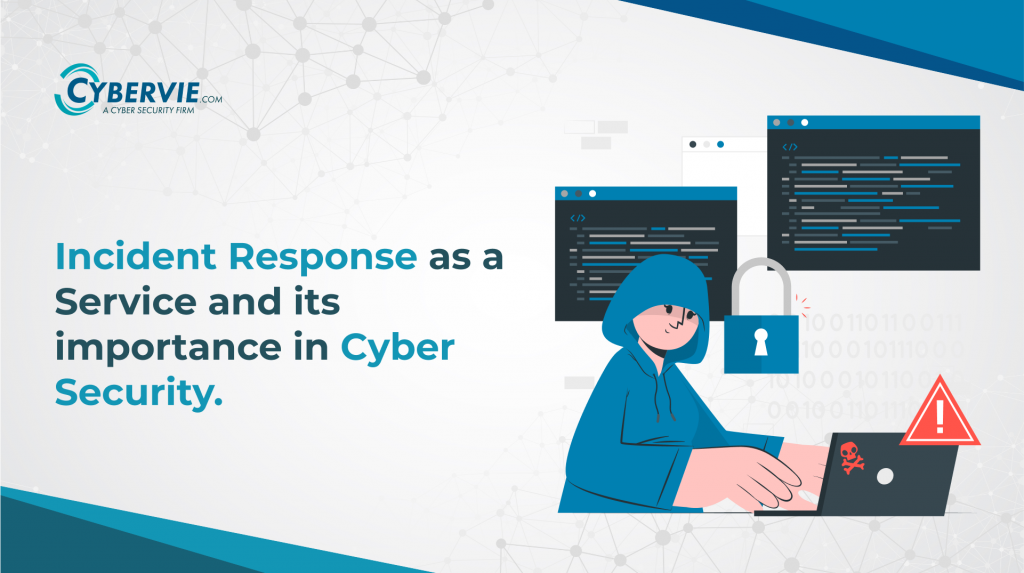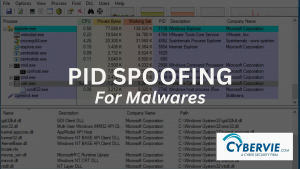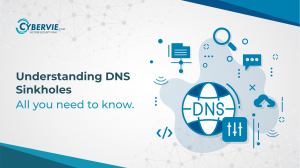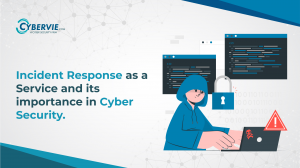What is Incident Management & Response as a Service?
Incident Response as a service is a methodical technique to detecting, mitigating, and managing potential cyberattacks. The primary goal of the incident response process is to assist companies in minimizing the unwanted threats caused by a breach, recovering as swiftly as possible, and actively planning for the future. Organizations can reduce the impact of cyberattacks by immediately taking pre-planned incident response measures during the security crisis.
It’s important to keep in mind that an IR plan continues to be valuable even after a cybersecurity incident has been resolved because it continues to provide support for successful litigation, documentation to show auditors, and historical knowledge to feed into the risk assessment process and improve the incident response process itself.
Incident Response as a Service and its importance in Cyber Security.
Incident response as a services is a systematic way to respond and manage the impact of a security breach or cyberattack, often known as an IT incident, computer incident, or security incident. The objective is to approach the situation in a way that minimizes damage, eradicates recovery time, and reduces costs.
A security incident or cyber-attack can cost a company time, money, reputation, and, ultimately, customers. Having an effective incident response function will help to minimize these negative impacts.
The design of the incident response as a service plan (IR plan) must be in line with the organization’s priorities and amount of acceptable risk because incident response planning is not just a technical concern.
Main Objective
The goal is to handle incidents effectively in order to limit damage to systems and data, save recovery time and cost, and maintain brand reputation. It’s crucial that businesses name a group, individual, or leader who will be in charge of overseeing the overall incident response strategy and carrying out the plan. This team’s name in a larger company is the Computer Security Incident Response Team (CSIRT).
Incident Response as a services
Whether you require immediate assistance or long-term assistance to improve your organization’s cyber incident response protocols, our specialists are available 24/7 to assist you throughout the event lifecycle.
Our cyber security Incident Response as a service include:
- Incident response retainers
- Digital forensics
- Tabletop incident response exercises
- Managed Detection and Response
- Litigation support
- Breach notification monitoring
What are the Different Types of Security Incidents?
- Phishing Ad Hoc
- Brute-Force Attacks
- Malware
- Drive-By Downloads
- SQL Injections
- Cross-Site Scripting
- Man-in-the-Middle Attacks
- Denial-of-Service (DoS) Attacks
- Fraud Analysis
- Lost & found investigation
Reasons Why You Need an Incident Response Plan
- Protect Your Data
- Protect Your Reputation & Customer Trust
- Protect Your Revenue
Incident response frameworks: Phases of incident response
It contains six phases: preparation, identification, containment, eradication, recovery and lessons learned.
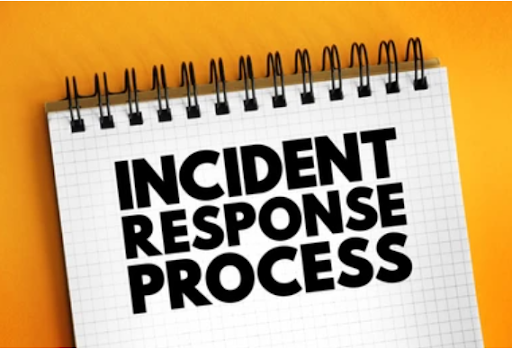
1) Preparation
The first step, known as preparation, is the only one that can be completed without a problem; so, it is important to invest a significant amount of effort into it before anything terrible occurs in the company.
It basically involves providing the CSIRT with the tools necessary to confidently handle any incident response and deploy it as needed. Depending on the infrastructure and the scale of the organization, it may not be as simple as it sounds.
2) Detection
The objective of this phase is to monitor networks and systems to detect, alert, and report on potential security incidents. Adopt cyber threat intelligence (CTI) capabilities to develop a comprehensive cyber monitoring program and to support ongoing monitoring and detection. Conduct cyber compromise assessments to detect unknown compromises.
3) Analysis
Gathering information and then prioritizing individual incidents and steps for a response. Forensic preservation and analysis of data to determine the extent and impact of the incident.
4) Containment
The most crucial phase of incident response is this one. Based on the intelligence and indicators of compromise obtained during the analysis phase, a containment strategy for an incident is developed. The security staff should concentrate on implementing risk-reduction measures to limit the organization’s exposure and harm.
5) Eradication
Once you have identified domains or IP addresses leveraged by the malicious actors for command and control, issue ‘threat mitigation requests’ to block the communication from all channels connected to these domains. The IR team should remove the known existing threats from the networks.
6) Recovery
- Develop a near-term remediation strategy and roadmap
- Focus on resuming normal business operations
- Develop a long-term risk mitigation strategy
- Document the incident to improve the IR plan and update security measures to avoid such incidents in future.
Tips to Build A Cyber Incident Response Plan
- Establish an Incident Response Team
- Conduct Threat Analysis
- Check Quick response for Guidelines (Such as Patching / Downloading latest version)
- Develop procedures for External communication.
- Test Incident response plan
- Learn
Playbooks and runbooks are the same entity
Runbooks or playbooks for incident response can be combined to give users flexible means of coordinating even the most intricate security operations. Depending on which solution best suits the process or procedure being documented, security administrators may utilize runbooks or playbooks to document various security processes. For each sort of event, the appropriate level and type of automation and orchestration can be supplied by assigning multiple runbooks or playbooks to that incident.
Incident response playbooks
To prevent further damage from occurring after a security threat has been detected, you must act immediately.
Each playbook contains:
- Prerequisites: The particular conditions you must satisfy before beginning the research. For instance, needed roles and permissions as well as logging that should be enabled.
- Workflow: The orderly sequence you should do the research in.
- Checklist: A list of duties for the flow chart’s steps. In highly regulated environments, this checklist might help you confirm your actions.
- Taking an investigation: Step-by-step instructions in detail for the particular research.
Example of Playbook/Runbook:
Incident Response Playbook: Unauthorized Access
Detection
- Alert from security monitoring system indicating unauthorized access to a system or network.
- Notification from an end-user reporting suspicious activity or unauthorized access.
- Review of logs or other system data indicating unusual activity or unauthorized access.
Identification
- Determine the scope of the unauthorized access (i.e., which systems or networks were affected)
- Identify the root cause of the unauthorized
- access (i.e., how the attacker gained access)
- Determine the level of access obtained by the attacker
Containment
- Isolate the affected system or network to prevent further unauthorized access
- Disable accounts or credentials used by the attacker to prevent further access
- Block any IP addresses or domains associated with the attacker
Analysis
- Collect and preserve any evidence related to the unauthorized access
- Analyze the evidence to determine the attacker’s motives and methods
- Identify any other systems or networks that may have been compromised as a result of the unauthorized access
Eradication
- Remove any malware or other malicious software associated with the unauthorized access
- Update and patch any systems or software that were compromised
- Change all passwords and credentials associated with the affected systems or networks
Recovery
- Restore any affected systems or networks to their normal operating state
- Conduct a thorough review of security controls and make any necessary changes or improvements
- Provide training or awareness to end-users to prevent similar incidents from occurring in the future
Communication
- Communicate the incident to internal stakeholders, including executive management and other relevant departments (e.g., legal, human resources)
- If required, notify law enforcement or other external parties as necessary and provide updates on the incident to stakeholders as needed.
Top Incident Response Companies
- SolarWinds Security Event Manager
- Manage Engine Log360
- Splunk Phantom
- Crowd Strike Falcon Insight.
- Log Rhythm SIEM
Our approach to choosing an incident response system
The following criteria were used to study the incident response as a service tool market and evaluate the available options:
- Links between detection and resolution systems.
- Coordinating with firewalls and access rights managers
- Customizable action rules and run books
- Live/logs status reports
- Value for money that is provided by an automated system at a reasonable price.
Get Rapid Incident Response as a services for your Enterprise.

CYBERVIE’S 24/7 Incident Response Team
CYBERVIE has an outsourced incident response team available to anyone including small, medium and large organizations. The incident response team provides professional security staff who are equipped to carry out fast, effective incident response activities.
The CYBERVIE incident response team can assist with:
- 24/7 incident response—such as identification, containment, eradication and recovery
- Deep forensic investigations—collecting data to determine the scope of an attack and who is accountable
- Threat hunting—analyze security data to proactively identify advanced threats
- Malware/Phishing analysis—examining malware in a sandbox to see its components and how to remediate it.
Why Choose Security Incident Response with CYBERVIE ?
Our Security Incident Response services help you in mitigating the effect of any incident that may have occurred within your business. Our professionals bring together industry-leading knowledge and expertise to assist you in quickly getting your arms around a breach in order to triage, contain, and remediate it.
As a leader in incident response, CYBERVIE takes pride in bringing order, stability, and control to situations that could otherwise cause temporary chaos. CYBERVIE collaborates closely with organizations to create IR plans that are specific to their team’s structure and capabilities.
Industry-wide Experience: Use our experience working across business verticals as well as our knowledge of varied industry and regulatory compliance requirements. Work with a trusted incident response team that’s repeatedly demonstrated its capabilities in the most demanding business environments. As a cybersecurity provider, cybersecurity experience across all sectors incident response services is available 24x7x365 through our managed services.
Benefits of Incident Response services with CYBERVIE
- Develop an effective breach remediation plan based on a definitive analysis of the nature and scope of the breach.
- Eliminate threats and prevent cyber attackers from maintaining an untiring presence on your network.
- Limit the impact of a cyber-attack with swift, sure cyber incident response service. Get access to a team of expert cybersecurity analysts and incident responders when you need them most.


